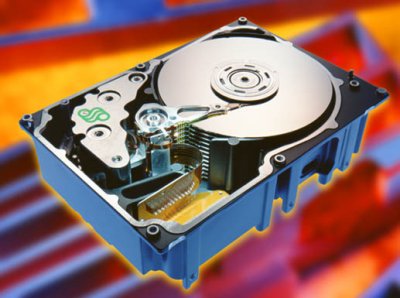 |
|
|
|
In the Forums... |
Posted: July 29, 2000 Written by: Tuan "Solace" Nguyen [ Adaptec DPT Century Ultra160 RAID SCSI: $ 869.00 ] (cont.) - Easy-to-use GUI storage management software - BIOS-based device setup and RAID configuration utility - Command Line Interface (CLI) utility for device status and configuration This card has everything a SCSI maniac could want. Why dual channel? Well, letís say you have an Ultra160 hard drive and a slower SCSI variant device such as a burner that runs on Ultra Wide. If you connect them to the same channel, you will degrade performance of the Ultra160 device because the host adapter has to change protocols every time it access different SCSI levels. Why use SCSI at all? Thatís a question thatís always asked. Simply put, SCSI offers better performance. It also offers massively better multitasking abilities than IDE. Also, because of onboard co processing, SCSI also uses less CPU cycles to do its job than IDE. With this controlling, weíre getting cutting edge SCSI technology raging at up to 160MB/sec per channel. And weíll also be doing RAID (Redundant Array of Inexpensive Disks) levels too. RAID is a method of combining several hard drives into one unit. It can offer fault tolerance and higher throughput levels than a single hard drive or group of independent hard drives. RAID provides real-time data recovery when a hard drive fails, increasing system uptime and network availability while protecting against loss of data. Multiple drives working together also increase system performance. Now that we have the controller in place, letís put in the hard drives. The Hard Drives [ 4 Seagate Cheetah 73 73GB Ultra160: $ 4,512 ]  Click for a full 1:1 scale image. Thatís a grand total of 292GB of storage capacity. Why are we using multiple hard drives of this insane capacity? Our main reason is to use RAID. Secondly, have lower capacity limits your RAID capacity. And besides, the more space the better. After all, itís the broadband and MP3 phenomenon. These babies spin at 10,000RPM and contain 16MB of cache each. Access time is a mere 5.85ms. Weíll be setting up a RAID 0 configuration (also known as Striping). RAID 0 divides up the data equally across an even number of drives. And works in pairs. Drive A holds all the 1ís and Drive B holds all the 0ís. Thus, if both drives work simultaneously, performance will double. This type of configuration is perfect for the video user. People who constantly do MPEG encoding and decoding and such will appreciate the raw speed of these drives in a RAID 5 setup. Alternative Solutions: Seagate Cheetah 73 Fiber-Channel Fiber-Channel Arbitrated Loop (FC-AL) is the be-all, end-all of interfaces. Able to pump data at 400MB/sec, FC is the cream of the crop. We would have gone with a FC controller and hard drive setup. But we thing these will do, unless youíre planning on using this system to do enterprise database serving or some form of 3D defense simulation rendering and such or decided to make the next Toy Story film. FC also allows 126 devices. Very, very high-end. These four babies run hot, so weíll need something to cool them down. Weíll go for PC Power & Cooling Bay-Cool hard drive coolers. Four of them cost a total of $46.00. Excellent price. Now that we have our main storage system in place, letís check out what graphic accelerator weíll be using. |
||
|
| |||
|---|---|---|---|